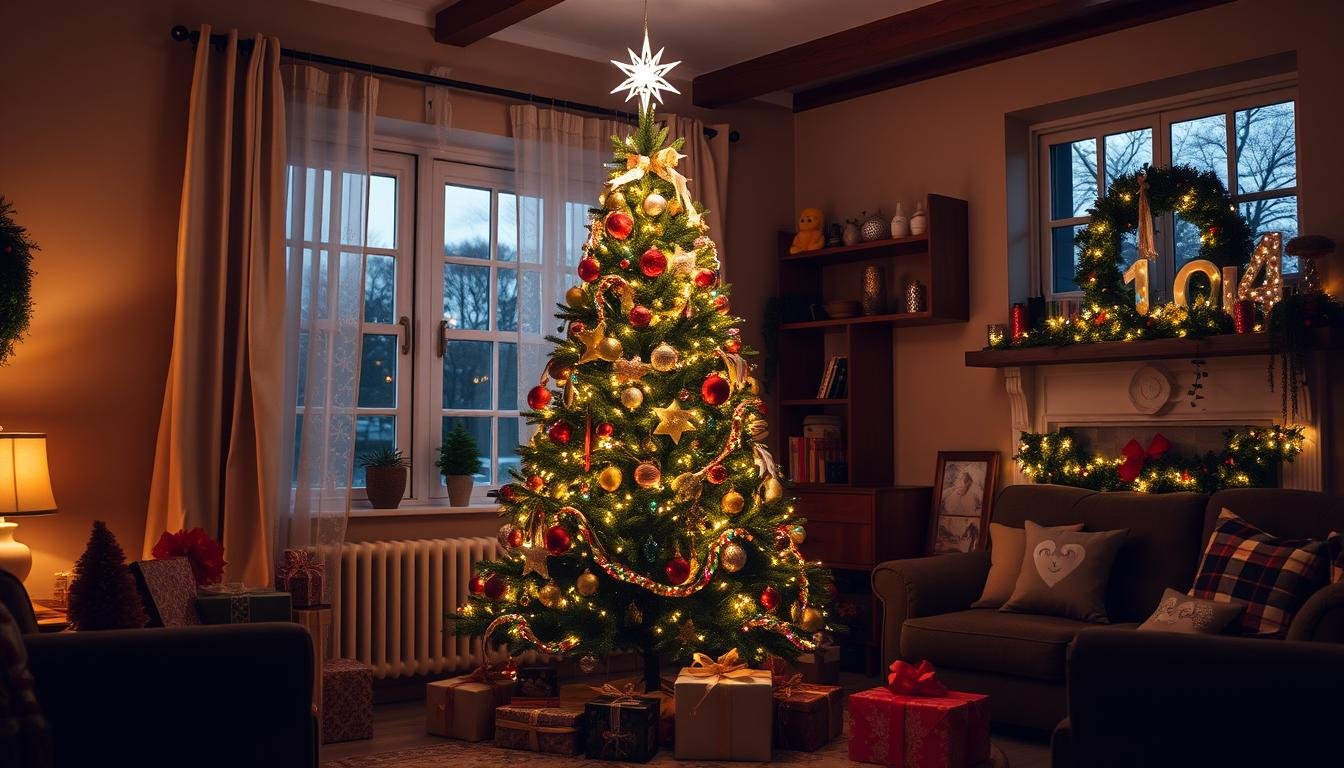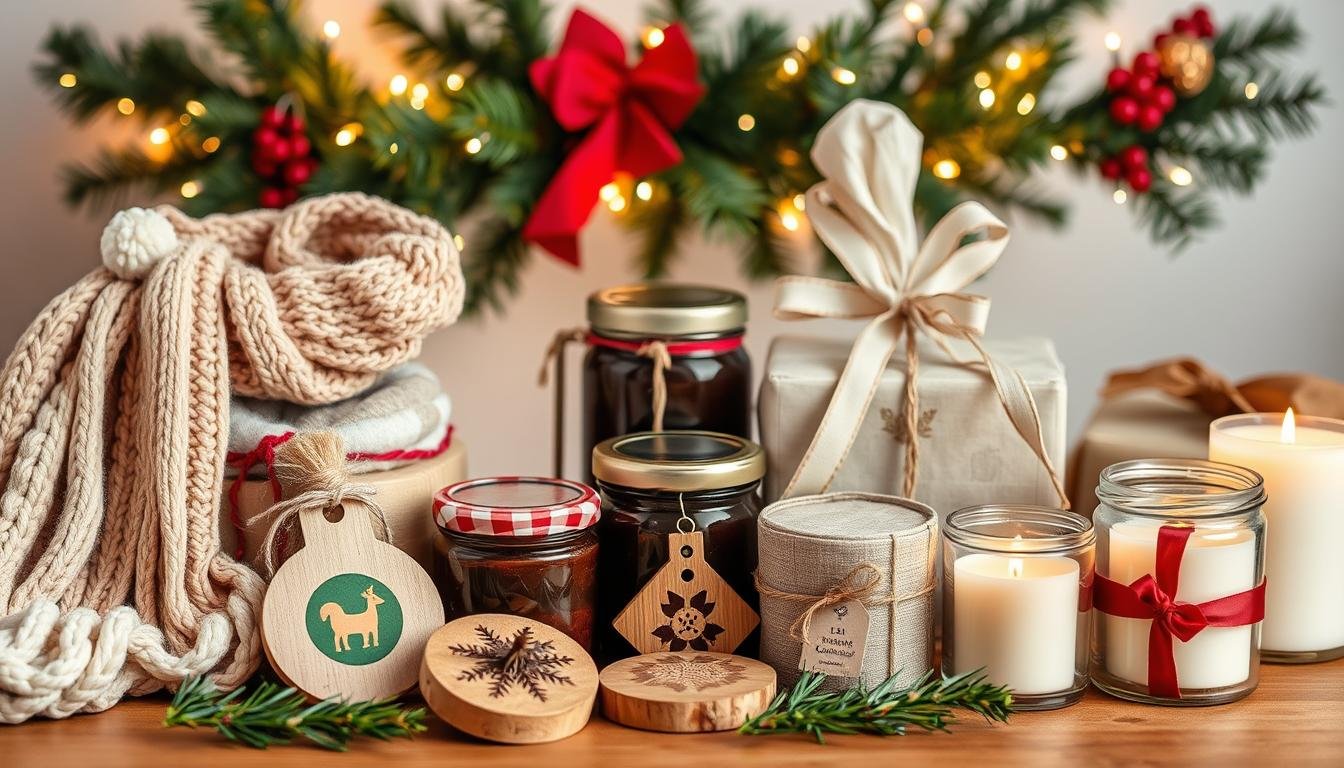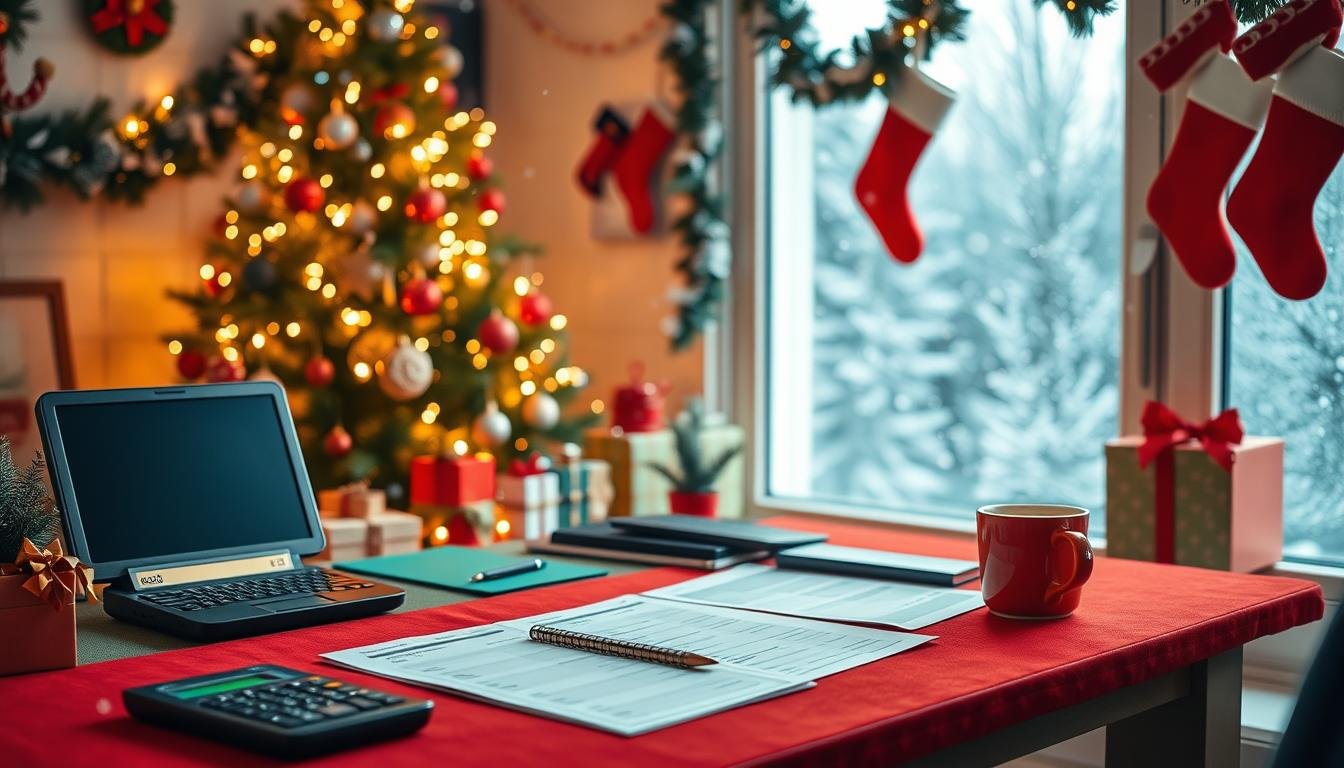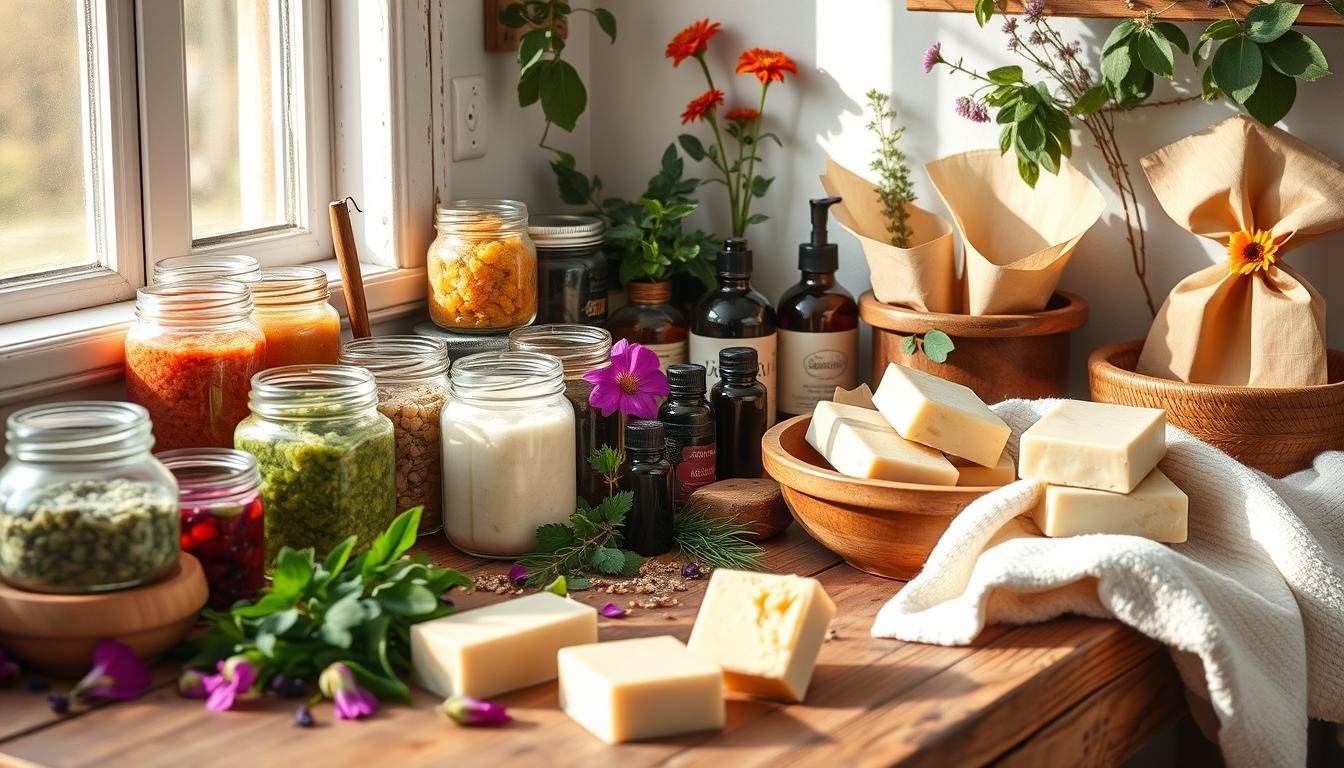
How to Choose a Christmas Tree – Expert Holiday Guide
Choosing the perfect Christmas tree is a special tradition that makes the holiday season magical. This guide offers expert tips on picking the right tree for your home. It ensures your celebration is both beautiful and lasting.
Focus on:
- Understand the different types of Christmas trees to find the best fit for your home
- Learn how to measure your space and choose a tree that fits seamlessly
- Discover the optimal time to purchase your tree for maximum freshness
- Evaluate tree quality and freshness to ensure a long-lasting display
- Explore budget-friendly options and where to find the best deals on Christmas trees
Whether you love the scent of a real tree or prefer an artificial one, this guide helps you choose wisely. It prepares you to create a beautiful holiday centerpiece. This will bring happiness to your loved ones.
Understanding Different Types of Christmas Trees
Choosing the right types of christmas trees can be tough. Knowing the special traits of popular trees helps you pick the best one for your christmas tree buyer’s guide. Let’s explore the various Christmas trees you might see.
Popular Fir Tree Varieties
Fir trees, like the Fraser and Balsam firs, have lush looks and a nice scent. They keep their needles well, making them a favorite. Their soft needles and strong branches are great for heavy ornaments.
Pine and Spruce Options
Pine and spruce trees offer a classic feel. Pine trees, such as the Scotch and Austrian, have a unique shape and stiff needles. Spruce trees, like the Colorado blue and Norway, have bright colors and a dense look.
Regional Tree Availability
The trees you can find vary by where you live. For example, the Northeast has more Fraser firs, while the West has Noble and Douglas firs. Research the common trees in your area to find the perfect one for your home.
| Tree Type | Characteristics | Typical Availability |
|---|---|---|
| Fraser Fir | Lush, full appearance; excellent needle retention; soft, flat needles | Northeastern United States |
| Scotch Pine | Distinctive triangular shape; longer, stiffer needles | Widely available across the U.S. |
| Colorado Blue Spruce | Unique, vibrant blue-green hue; dense, compact appearance | Western and Midwestern United States |
The ideal types of christmas trees depend on your taste, space, and where you live. By knowing the special features of popular trees, you can choose the perfect one for your christmas tree buyer’s guide.
Live vs Artificial Trees: Making the Right Choice
Choosing between a live or artificial Christmas tree can be tough. Both have their good and bad sides. Your choice depends on what you like and need.
The Pros and Cons of Live Christmas Trees
- Authentic Aroma: Live trees give off the classic evergreen scent of the holidays.
- Environmental Benefits: They are a renewable resource and can be recycled or composted, making them eco-friendly.
- Shorter Lifespan: Live trees need more care and may only last a few weeks before they dry out.
- Higher Cost: They can be pricier, especially if bought from a specialty store or tree farm.
The Pros and Cons of Artificial Christmas Trees
- Convenience: Artificial trees need less care and can be used for years, making them convenient.
- Longer Lifespan: They can last many years with proper storage, saving money in the long run.
- Limited Realism: Even though they look better than before, they still lack the natural charm of live trees.
- Environmental Impact: Made from non-biodegradable materials, their production and disposal harm the environment.
The choice between a live or artificial live vs artificial christmas trees depends on your preferences, budget, and environmental concerns. Think about what matters most to you and choose the option that fits your holiday traditions and lifestyle.
“The smell of a freshly cut Christmas tree is one of the most nostalgic and comforting scents of the holiday season.”
How to Choose a Christmas Tree That Fits Your Space
Choosing the right Christmas tree is key. It should fit perfectly in your home. By measuring your space and thinking about important details, you can pick a tree that looks great without taking up too much room.
Measuring Your Space
Start by measuring the spot for your tree. Note the ceiling height and the area’s width and depth. This will help you pick a tree that’s just right for your space.
Considering Ceiling Height
Measuring the ceiling is crucial. Subtract a few inches for the stand and topper. This ensures your tree fits comfortably without hitting the ceiling.
Tree Width Requirements
The tree’s width is also important. Make sure it fits without pushing furniture or blocking paths. Bushier trees need more space than slim ones.
| Room Dimensions | Recommended Tree Height | Recommended Tree Width |
|---|---|---|
| 8′ x 10′ | 6-7 feet | 4-5 feet |
| 12′ x 15′ | 7-8 feet | 5-6 feet |
| 15′ x 20′ | 8-9 feet | 6-7 feet |
By measuring carefully and considering height and width, you can find the ideal Christmas tree. It will fit perfectly in your home.
Best Time to Buy Your Christmas Tree
Picking a fresh Christmas tree is a big part of the holiday season. The time you buy it can affect how long it lasts and how well it looks. Whether you’re experienced or new to buying trees, knowing when to buy is key.
The best time to get your Christmas tree is between Thanksgiving and the second week of December. This time has many benefits:
- Tree Freshness: Trees bought early stay fresh and healthy longer.
- Availability: You’ll find more tree types and sizes during this busy season.
- Pricing: Early shoppers might get better prices and deals.
If you wait until the last minute, you can still find a great tree. Buying in the days before Christmas can offer:
- Discounted Pricing: Stores may cut prices on trees they haven’t sold yet.
- Convenience: You’ll face fewer crowds and easier parking.
The best time to buy your Christmas tree depends on what you want. Whether you want the biggest selection or the best price, think about when you buy. This way, you’ll get a tree that will make your holiday season merry and bright.

Essential Tools and Equipment for Tree Selection
Getting ready for Christmas tree shopping means having the right tools. You’ll need things like measurement tools, transportation gear, and tree stands. These items help make picking and setting up your tree easier and faster.
Measurement Tools
Measuring is key when picking a Christmas tree. A simple tape measure helps you check if the tree will fit in your home. A height stick or measuring pole is also useful for measuring the ceiling and finding the right tree size.
Transportation Equipment
- Sturdy vehicle: A good vehicle, like a truck or SUV, makes moving a tree easier.
- Tree straps or ropes: Use these to keep the tree safe in your car. Look for adjustable straps or heavy-duty ropes.
- Tree bag or netting: A tree bag or netting keeps the tree’s branches and needles in place during transport.
Tree Stand Options
Choosing the right tree stand is crucial for a stable tree. Here are some options:
| Stand Type | Key Features | Recommended For |
|---|---|---|
| Traditional Metal Stand | Sturdy construction, often adjustable to fit various tree sizes | Live trees of all sizes |
| Tree Disk | Compact, easy to store, suitable for smaller artificial trees | Smaller artificial trees |
| Tree Waterer Stand | Includes a water reservoir to keep live trees hydrated | Live trees that require regular watering |
With the right tools and equipment, you’re ready to find and transport your perfect Christmas tree. This ensures a smooth and joyful holiday season.
Evaluating Tree Freshness and Quality
When picking a fresh christmas tree, it’s key to check its quality and freshness. This ensures your tree stays vibrant and lasts all holiday season. Here are some tips to help you pick the right tree:
- Needle Retention: Hold a branch and run your hand over the needles. They should feel soft and stay on the branch well. Stay away from trees with dry or falling needles.
- Branch Flexibility: Gently bend a branch. It should bend easily and return to its shape. If it’s stiff, the tree is not fresh.
- Tree Aroma: A healthy tree smells fresh and green. If it doesn’t have this scent, it might be too old or dry.
- Trunk Appearance: Look at the trunk for any color changes, cracks, or damage. It should be green and moist, not dry.
By checking these signs, you can pick a fresh christmas tree. This tree will make your home festive and joyful all season.

“A fresh, vibrant Christmas tree is the heart of a truly magical holiday celebration.”
Budget Considerations and Price Comparisons
Choosing the right christmas tree is all about budget. The price of a tree changes based on a few things. Knowing these can help you find great deals and stick to your holiday budget.
Cost Factors to Consider
- Tree type and size – Some trees, like noble firs, cost more. Bigger trees also have a higher price.
- Location and source – Trees from local farms or pop-up lots might be cheaper. High-end retailers or specialty shops charge more.
- Delivery and setup services – Services like delivery and setting up the tree can increase the cost.
Where to Find the Best Deals
To get the best deals on christmas trees, try these tips:
- Shop early in the season – Prices drop before the holiday rush starts.
- Compare prices across multiple sellers – Look at local farms, big box stores, and online retailers for the best rates.
- Look for sales, discounts, and bundled offers – Some sellers offer special deals to attract customers.
- Consider a smaller, less expensive tree – A compact tree can still make a big impact without costing too much.
By thinking about your budget and looking around, you can find the perfect christmas tree. Happy hunting!
Transportation Tips and Safety Guidelines
When you’re taking your christmas tree selection home, safety is key. The right way to transport your tree ensures it gets to your home without damage. This way, it’s ready to brighten up your living room for the holidays.
Secure Your Tree Properly
Before you leave, make sure your christmas tree selection is securely tied down. Use strong rope or straps to hold the tree to your car’s roof or a truck’s back. Cover the top and sides to protect the branches from wind.
- Wrap the tree in a protective tarp or netting
- Tie the trunk to the roof rack or frame
- Secure the base and top of the tree
Prepare Your Vehicle
Get your car ready to carry your christmas tree selection. Clear out any extra stuff from the trunk or back. This makes a safe and stable spot for your tree.
- Remove any bulky or fragile items from the vehicle
- Lay down a tarp or blanket to protect your car’s interior
- Consider using a tree-top carrier or roof rack if available
Driving Tips for Tree Transport
After loading your christmas tree selection securely, drive carefully to your destination. Slow down and adjust your driving to handle the tree’s extra weight and size.
“Driving slowly and carefully is the key to getting your tree home safely.”
- Maintain a slower speed, especially on turns and curves
- Avoid sudden braking or accelerating
- Be mindful of overhead clearance when entering parking garages or low-hanging obstacles
By following these tips and guidelines, you’ll have a worry-free trip with your christmas tree selection. You’ll arrive home ready to start decorating for the holidays.

Setting Up Your Tree at Home
Getting a fresh Christmas tree is a beloved holiday tradition. The real magic starts when you set it up and make your home a winter wonderland. We’ll cover the basics of setting up your tree, from choosing the right stand to the first care steps.
Proper Stand Installation
The stand is the base of your Christmas tree. Pick a sturdy, adjustable stand that fits your tree’s size and weight. Follow the instructions to ensure it’s secure and level. This will keep your tree standing tall all season.
Straightening and Securing
After setting up the stand, straighten and secure your tree. Rotate it gently until it’s upright and where you want it. Use the lowest branches to guide you. Make small adjustments until it’s perfectly centered.
Initial Care Steps
- Give your tree a fresh cut: Trim the bottom inch or two of the trunk to help it absorb water more effectively.
- Fill the stand with water: Keep the stand filled with clean, fresh water to maintain the tree’s moisture and prevent premature drying.
- Check the water level daily: As your tree absorbs water, be sure to replenish the stand to ensure it never runs dry.
By following these simple steps, you’ll have a stunning Christmas tree. It will be the centerpiece of your holiday decor. Enjoy the process and the beautiful results!
| Step | Description |
|---|---|
| 1. Proper Stand Installation | Choose a sturdy, adjustable stand that can accommodate the size and weight of your tree. Follow the manufacturer’s instructions carefully to ensure a secure and level fit. |
| 2. Straightening and Securing | Gently rotate the tree, adjusting its position until it stands upright and aligned with your desired placement. Use the tree’s lowest branches to guide the straightening process. |
| 3. Initial Care Steps |
|
“Setting up a Christmas tree is a cherished tradition that brings joy and warmth to any home. With a little care and attention, you can ensure your tree’s beauty and longevity throughout the holiday season.”
Essential Care and Maintenance Tips
To keep your Christmas tree looking great, you need to take care of it. Start by watering it regularly. This keeps the needles green and prevents them from drying out too soon. Make sure to water your tree every day to keep the stand full.
It’s also important to watch the temperature. Don’t put your tree near fireplaces or radiators. The heat can make the tree dry out quickly. Keep it in a cool, stable place to make it last longer.
When decorating, think about the weight and where you put ornaments. Spread them out to avoid making the tree lean or break. Also, use a tree skirt to hide the stand and make your tree look better.



